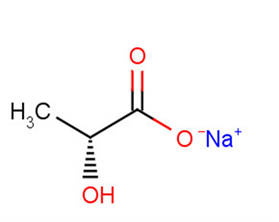
Sodium D-lactate
CAS No. 920-49-0
Sodium D-lactate( —— )
Catalog No. M20065 CAS No. 920-49-0
Lactic acid is an organic acid. It is a chiral molecule consisting of two optical isomers L-lactic acid and D-lactic acid with the L-isomer being the most common in living organisms. Lactic acid also is a microbial metabolite.
Purity : >98% (HPLC)
 COA
COA
 Datasheet
Datasheet
 HNMR
HNMR
 HPLC
HPLC
 MSDS
MSDS
 Handing Instructions
Handing Instructions
| Size | Price / USD | Stock | Quantity |
| 5MG | 42 | In Stock |


|
| 10MG | 65 | In Stock |


|
| 25MG | 132 | In Stock |


|
| 50MG | 205 | In Stock |


|
| 100MG | 335 | In Stock |


|
| 500MG | 782 | In Stock |


|
| 1G | Get Quote | In Stock |


|
Biological Information
-
Product NameSodium D-lactate
-
NoteResearch use only, not for human use.
-
Brief DescriptionLactic acid is an organic acid. It is a chiral molecule consisting of two optical isomers L-lactic acid and D-lactic acid with the L-isomer being the most common in living organisms. Lactic acid also is a microbial metabolite.
-
DescriptionLactic acid is an organic acid. It is a chiral molecule consisting of two optical isomers L-lactic acid and D-lactic acid with the L-isomer being the most common in living organisms. Lactic acid also is a microbial metabolite.
-
In Vitro——
-
In Vivo——
-
Synonyms——
-
PathwayOthers
-
TargetOther Targets
-
RecptorOthers
-
Research Area——
-
Indication——
Chemical Information
-
CAS Number920-49-0
-
Formula Weight112.06
-
Molecular FormulaC3H5NaO3
-
Purity>98% (HPLC)
-
SolubilityDMSO:10 mM
-
SMILES[Na+].C[C@@H](O)C([O-])=O
-
Chemical Name——
Shipping & Storage Information
-
Storage(-20℃)
-
ShippingWith Ice Pack
-
Stability≥ 2 years
Reference
1.Juturu V et al. Microbial production of lactic acid: the latest development. Crit Rev Biotechnol. 2016 Dec;36(6):967-977.
molnova catalog



related products
-
Ilexoside XLVIII
Ilexoside XLVIII is an acyl CoA cholesteryl acyl transferase ( ACAT ) inhibitor. Ilexoside XLVIII is a triterpene saponin isolated from an aqueous extract of the leaves of Ilex kudincha.
-
Cyclohexanecarboxyli...
Cyclohexanecarboxylic acid is a flavouring ingredien.
-
Esaprazole
Esaprazole has a dose - dependent cellular protective effect on the human gastric mucosa.



 Cart
Cart
 sales@molnova.com
sales@molnova.com


